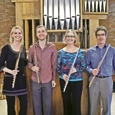In mid-November the Upper Midwest Flute Association, Inc. presented the Flutists of the Minnesota Orchestra in Recital at the half-day point of Patricia George’s Flute Spa. After the recital the flutists shared some thoughts about their performances.
Can you offer some tips for playing those long lyrical lines in Samuel Barber’s Canzone, Op. 38?
Wendy Williams: Yesterday, I video-recorded my rehearsal with our pianist, Gail Olszewski. When I watched the playback, I realized that some movements with my breaths were interrupting the long lyrical lines in the music. Using that knowledge, I tried to be sure that any movements I made with my body enhanced the music and phrasing rather than detracting from it.
The performance of the Bach Sonata in E Major was one of the best I have ever heard because you paid such attention to Baroque performance practice, but accomplishing this while playing on a modern flute. Why did you choose to perform the Bach?
Roma Duncan: When I became a professional piccolo player, I soon realized that my repertoire had shrunk because the piccolo was not used in the orchestra regularly until the Romantic era. So, for recitals I have been trying to re-examine the early repertoire I learned in conservatory because to play Romantic music well you have to remember that it evolved from the music of the Baroque and Classic eras.
The Karg-Elert 30 Caprices are some of the best music written for the solo flute. Why did you choose to perform this composition and how did you decide which caprices to group together?
Adam Kuenzel: I wanted to show these little vignettes in a performance. I tried to get them to have some relationship, one to the other through the choice of keys. Five was plenty. I like the variety. They are short, to the point and interesting. Karg-Elert had lots to say in a short period of time.
A Fragile Circle written by flutist, Timothy Hagen, requires a wide range of emotions and tonal colors. What were you thinking about to create such a range of colors and dynamics?
Greg Milliren: This is a very demanding and atmospheric piece that has many opportunities to display different kinds of sounds. You have to figure out how to play very softly and also very loudly and still be in tune. To achieve a wide range of tonal colors I work on changing the size and shape of the oral cavity, experiment with tongue placement and use different syllables at the front of the embouchure. While I have a sound in mind that I am going for, the end result is that all these choices greatly affect the angle of the airstream as it hits the blowing edge. It was both a joy and a challenge to perform a very emotional piece based on Hagen’s feelings about loss and acceptance.
Could you share any thoughts about blending or intonation – the aspects that allow you four to play as one, as you did so well in The Marriage of Figaro?
Wendy Williams: When playing second flute, I listen intently to the other second players: the second clarinet, the second bassoon, and the second oboe. I try to match my intonation with them and also consider my vibrato usage. These instruments use less or no vibrato compared to the flute. In my warm-up each day, I find it useful to play with the tuner on the drone setting. While listening to the drone root, I play arpeggios flattening the third if the chord is major, raising the third if the chord is minor. For the perfect fifth, I sharpen it a bit. I always listen to Adam to match volume, note length, tone color and vibrato speed. The only time I play louder than him is when I am below him in octaves or when I have a more important solo line.
Many of the participants here today are learning to play the piccolo. What advice would you give them?
Roma Duncan: Always play as if you are right. Do everything you can to actually be right and perform accurately with the other players, and then play with confidence. If your approach is timid or hesitant, you will sound wrong.
Meet the Minnesota Orchestra Flute Section
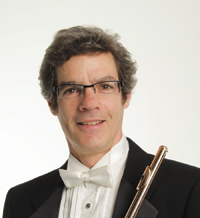 Principal Flute: Adam Kuenzel
Principal Flute: Adam Kuenzel
Since joining the Minnesota Orchestra in 1990, principal flutist Adam Kuenzel has regularly appeared as soloist at Orchestra Hall. He has premiered two major works for flute and orchestra: Stanislaw Skrowaczewski’s Fantasies for Flute and Orchestra, Il Piffero della Notte, and Manuel Sosa’s Eloquentia: Espacio para Flauta y Orquesta. A native of Cincinnati, Kuenzel attended the Oberlin Conservatory.
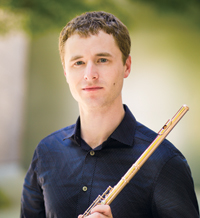 Associate Principal: Greg Milliren
Associate Principal: Greg Milliren
Wisconsin native Greg Milliren, associate principal flute since 2009, studied at the University of Minnesota with Julia Bogorad-Kogan and Immanuel Davis, and at the University of Southern California with Jim Walker. He has had the privilege of performing flute and piccolo in the sections of many major orchestras, including those in Los Angeles, San Francisco, Chicago, Boston, National, Seattle, Detroit, and Colorado, as well as the Russian National Orchestra.
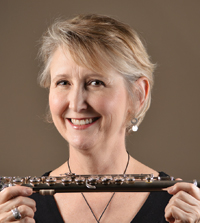 Second Flute: Wendy Williams
Second Flute: Wendy Williams
Wendy Williams has played second flute with the Minnesota Orchestra since 1992. A graduate of the University of Cincinnati College-Conservatory of Music, Wendy played previously as principal flute with the Houston Ballet, second flute with the Houston Grand Opera and Houston Symphony. She has played two seasons with the Grand Teton Festival Orchestra and has been the honored to join the sections of major orchestras, including those in Chicago, Detroit, Florida, National, Pittsburgh, St. Louis, and St. Paul.
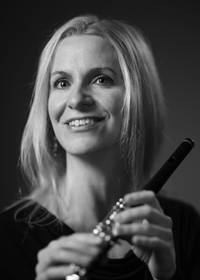 Piccolo: Roma Duncan
Piccolo: Roma Duncan
Roma Duncan grew up in Newfoundland and earned a bachelor of music in flute performance from McGill University and then a master of music in flute performance at the University of Michigan where she began to seriously study the piccolo. Prior to joining the Minnesota Orchestra in 2003, she was a member of several other orchestras both as a flute and a piccolo player, including the Windsor Symphony Orchestra, Orchestra London Canada, the Fort Wayne Philharmonic, and the Ann Arbor Symphony Orchestra.
